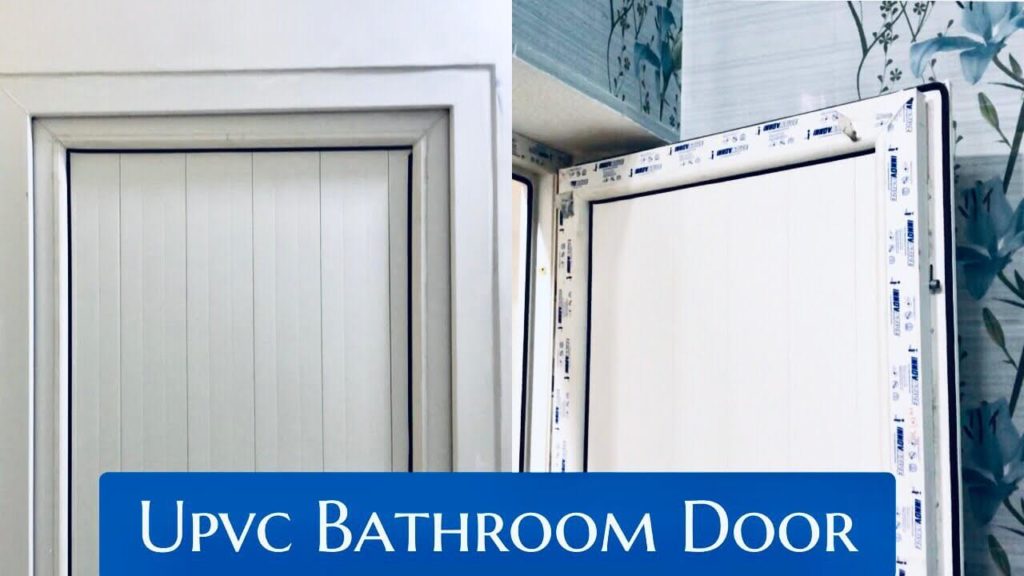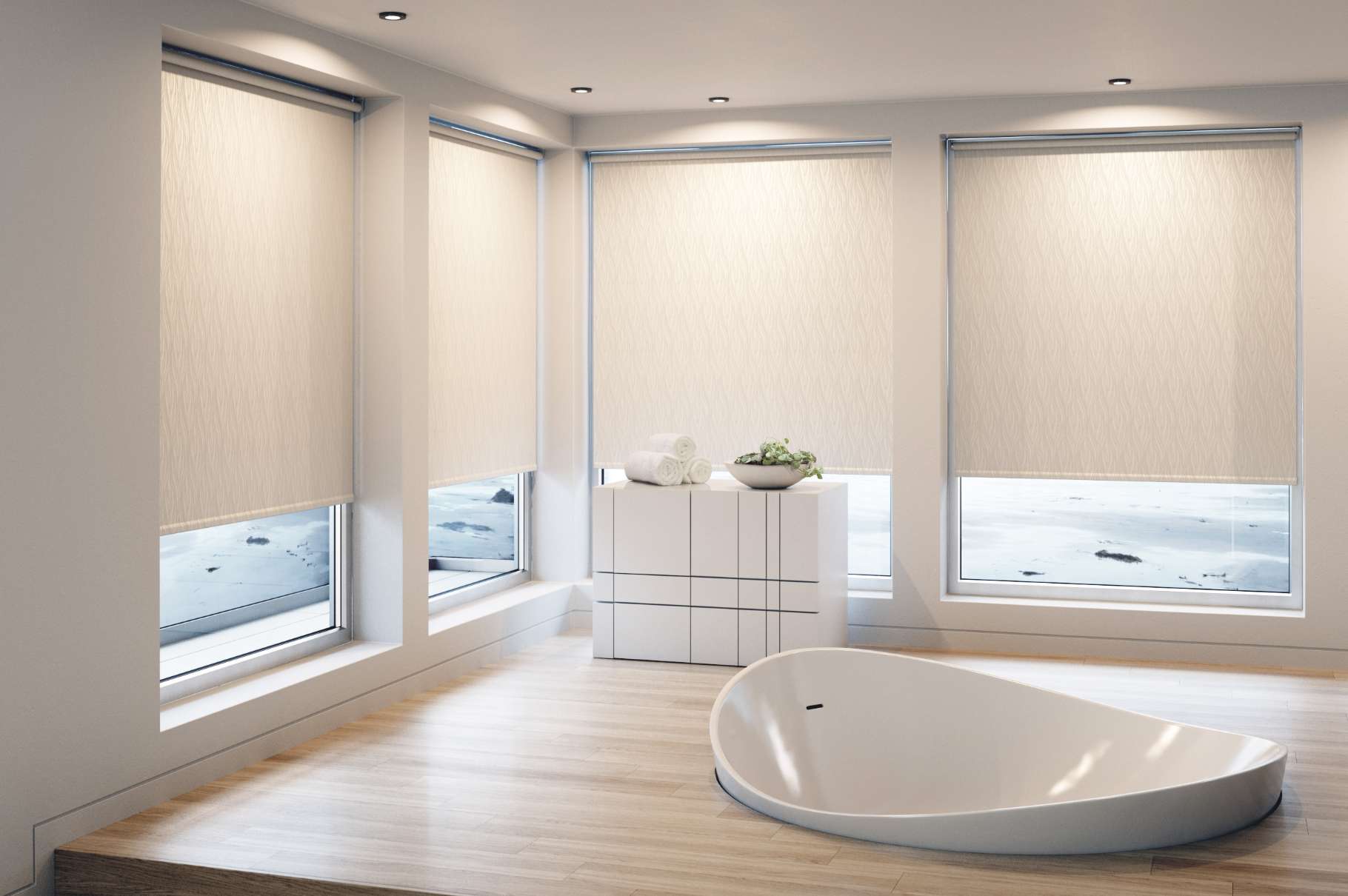Types of Fabric Bathroom Doors: Fabric Door For Bathroom
.jpg)
Fabric bathroom doors offer a unique and stylish alternative to traditional doors, adding a touch of elegance and privacy to your bathroom. They are a versatile option that can complement various bathroom designs, from modern to rustic.
Types of Fabric Bathroom Doors
Fabric bathroom doors come in a variety of materials, each with its own advantages and disadvantages. The most common types include:
- Canvas Doors: Canvas is a durable and affordable fabric option. It is often treated with water-resistant coatings to make it more suitable for bathroom environments. Canvas doors are available in various colors and patterns, offering a wide range of aesthetic options. However, canvas can be prone to wrinkles and may require frequent cleaning.
- Linen Doors: Linen is a natural fiber known for its soft texture and breathability. It is often used in high-end bathroom designs due to its elegant appearance. Linen doors are typically more expensive than canvas doors, but they offer a luxurious feel. Linen is also naturally resistant to mold and mildew, making it a good choice for humid bathrooms. However, linen can be more prone to wrinkles and may require more careful maintenance.
- Polyester Doors: Polyester is a synthetic fiber that is known for its durability and resistance to fading. Polyester doors are often water-resistant and easy to clean, making them a practical choice for bathrooms. They are also available in a wide range of colors and patterns. However, polyester can be less breathable than natural fibers, and it may not be as aesthetically pleasing as linen or canvas.
- Silk Doors: Silk is a luxurious fabric that adds a touch of elegance to any bathroom. Silk doors are known for their soft texture and beautiful drape. However, silk is a delicate fabric that requires careful maintenance and can be prone to damage from water and moisture.
Styles and Features
Fabric bathroom doors can be designed in a variety of styles to complement different bathroom designs. Some common features include:
- Sheer or Opaque: Fabric doors can be made with sheer or opaque fabrics, depending on the desired level of privacy. Sheer fabrics allow for natural light to pass through, while opaque fabrics provide complete privacy.
- Embroidered or Printed: Fabric doors can be embroidered or printed with various designs and patterns to add a decorative touch to the bathroom.
- Panel or Curtain: Fabric bathroom doors can be designed as panels or curtains, depending on the desired look and functionality. Panel doors offer a more structured appearance, while curtains provide a more flowing and relaxed feel.
- Sliding or Swinging: Fabric bathroom doors can be designed to slide or swing open, depending on the available space and desired functionality. Sliding doors are a good option for small bathrooms, while swinging doors offer a more traditional look.
Popular Fabric Bathroom Door Designs
Fabric bathroom doors are becoming increasingly popular as a stylish and functional alternative to traditional doors. Some popular designs include:
- Modern Minimalist: Modern minimalist fabric bathroom doors often feature clean lines and simple designs, using neutral colors and natural fabrics like linen or cotton. They can be either sheer or opaque, depending on the desired level of privacy.
- Rustic Farmhouse: Rustic farmhouse fabric bathroom doors often feature natural fabrics like burlap or canvas, with earthy tones and distressed finishes. They can be adorned with floral prints or simple embroidery to add a touch of charm.
- Bohemian Chic: Bohemian chic fabric bathroom doors often feature bold colors and patterns, using fabrics like silk or velvet. They can be adorned with fringe, tassels, or beads to create a whimsical and eclectic look.
Functionality and Installation

Fabric bathroom doors offer a unique blend of style and practicality, adding a touch of elegance while providing privacy and noise reduction. Their functionality and installation process are key aspects to consider when deciding if they are the right choice for your bathroom.
Functionality
Fabric bathroom doors offer a range of functional advantages, making them a popular choice for modern bathrooms.
- Opening and Closing Mechanisms: Fabric bathroom doors typically use a simple sliding mechanism, allowing them to move smoothly along a track. This makes them easy to operate, even in tight spaces. Some models may also feature a folding mechanism for more compact spaces.
- Privacy Levels: Fabric bathroom doors provide varying levels of privacy depending on the fabric’s weight and weave. While some fabrics offer complete opacity, others allow for a degree of light diffusion, creating a more airy and open feel.
- Noise Reduction: Fabric bathroom doors can effectively reduce noise levels, providing a sense of privacy and tranquility. The fabric’s density and weave contribute to its sound-absorbing qualities, helping to minimize sound transmission from the bathroom.
Installation Process
Installing a fabric bathroom door is a relatively straightforward process that can be completed with basic tools and materials.
- Necessary Tools and Materials:
- Measuring tape
- Level
- Drill
- Screwdriver
- Pencil
- Saw (for cutting the track)
- Screws
- Wall anchors (if necessary)
- Fabric bathroom door kit
- Step-by-Step Installation Guide:
- Measure and Mark: Accurately measure the width and height of the doorway, ensuring sufficient clearance for the door to slide smoothly. Mark the locations for the track and door hardware on the wall using a pencil.
- Install the Track: Secure the track to the wall using screws or wall anchors, ensuring it is level and aligned with the marked locations. Use a level to ensure proper alignment.
- Install the Door Hardware: Attach the door hardware, such as rollers or sliders, to the top and bottom of the fabric door, ensuring they are securely fastened.
- Install the Door: Carefully slide the fabric door onto the track, ensuring it moves smoothly and without any obstructions. Adjust the door hardware as needed for proper alignment and operation.
Design and Decor

Fabric bathroom doors are more than just functional; they’re a powerful design element that can transform the look and feel of your bathroom. They offer a unique opportunity to inject personality and style, complementing various design aesthetics and creating a cohesive and inviting space.
Examples of Fabric Bathroom Doors in Different Bathroom Styles, Fabric door for bathroom
Fabric bathroom doors seamlessly integrate into diverse bathroom styles, adding a touch of sophistication and personalization.
- Modern and Minimalist: For modern bathrooms, opt for fabric doors in solid colors like white, gray, or black. These colors create a clean and uncluttered look, complementing the minimalist aesthetic. Consider using smooth, textured fabrics like linen or cotton for a contemporary feel.
- Traditional and Eclectic: Traditional bathrooms often feature intricate details and rich textures. Fabric doors in floral patterns, damask prints, or velvet textures can enhance the elegance and warmth of this style. Incorporate rich colors like burgundy, emerald green, or gold for a classic touch.
- Bohemian and Rustic: Embrace natural textures and earthy tones for a bohemian or rustic bathroom. Choose fabric doors in woven patterns, burlap textures, or natural fibers like jute or hemp. These materials add a touch of warmth and rustic charm to the space.
Incorporating Fabric Bathroom Doors into Existing Bathroom Designs
Integrating fabric bathroom doors into your existing bathroom design requires careful consideration of color, pattern, and accessory choices.
- Color Matching: Fabric doors can either complement or contrast the existing color scheme. For a cohesive look, choose fabric colors that match or coordinate with the bathroom’s walls, tiles, or accessories. To create a focal point, select a bold color that contrasts with the existing palette.
- Pattern Selection: Patterns can add visual interest and personality to the bathroom. Consider the overall design style and choose patterns that complement the existing décor. For example, a geometric pattern can add a modern touch, while a floral pattern can enhance a traditional aesthetic.
- Accessory Choices: Fabric bathroom doors can be further enhanced with accessories like curtain rods, tiebacks, and decorative hardware. These accessories can add a touch of elegance and functionality, complementing the overall design. Consider using metal rods in finishes that match the bathroom fixtures or hardware.
Fabric door for bathroom – While a fabric door for your bathroom might offer a cozy, intimate feel, it may not always provide the level of privacy you desire. If you’re seeking a more translucent barrier that allows light to filter through while still maintaining a sense of seclusion, perhaps a frosted glass bathroom door is the answer.
This type of door offers a balance between openness and privacy, allowing for a sense of peace and tranquility within your sanctuary.
A fabric door for the bathroom, much like a soft veil, offers a sense of privacy while still allowing light to filter through. However, if you seek a more modern and airy feel, consider a glass barn door for bathroom.
The transparency of glass can symbolize clarity and openness, reflecting the purity of the space. Regardless of your choice, remember that the most important element is creating a sanctuary that nourishes your spirit and allows you to connect with your inner peace.